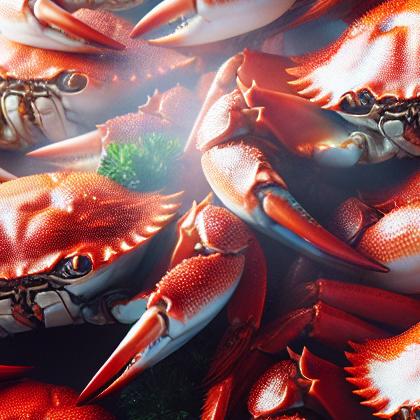Showing results for 'Crabs'
close
Crabs

Crabs are decapod crustaceans of the infraorder Brachyura, which typically have a very short projecting "tail" (abdomen) (Greek: βραχύς / brachys = short, οὐρά / οura = tail), usually entirely hidden under the thorax. They live in all the world's oceans, in fresh water, and on land, are generally covered with a thick exoskeleton and have a single pair of claws. Many other animals with similar names – such as hermit crabs, king crabs, porcelain crabs, horseshoe crabs and crab lice – are not true crabs.
Crabs Pairs With:
Food Item
Flavor Affinity Level

Did you know there are 200 food flavor pairings in my database for Crabs available. What you are seeing above is a random list of 30 items which pair with Crabs.
For the entire list, beautifully formatted, enter your email address and click the download button below, then I'll email it to you as a PDF.
Crabs Properties:
| Food Property | Type | Description |
|---|---|---|
| Flavor Profile | Umami | Crabs have a rich umami flavor due to the presence of glutamate and inosinate. |
| Texture | Firmness | Crab meat is firm and slightly chewy, providing a satisfying texture. |
| Nutritional Value | Macronutrients | Crab meat is high in protein and low in fat, making it a healthy seafood option. |
| Micronutrients | Crab meat is rich in essential micronutrients such as vitamins B12 and selenium. | |
| Fiber | Crab meat is low in fiber. | |
| Color | Natural Pigments | Crab shells have a natural reddish-brown color due to pigments such as astaxanthin. |
| Aroma | Volatile Compounds | Crab meat has a distinct aroma attributed to volatile compounds produced during cooking. |
| Chemical Composition | Acidity/Alkalinity (pH) | Crab meat has a slightly alkaline pH level. |
| Cooking Behavior | Heat Conductivity | Crab meat cooks quickly due to its high heat conductivity. |
| Water Retention | Crab meat retains moisture well during cooking, staying juicy and tender. | |
| Oil Absorption | Crab meat does not absorb much oil when cooked. |
Food Pairing App - Version 1.2.0
